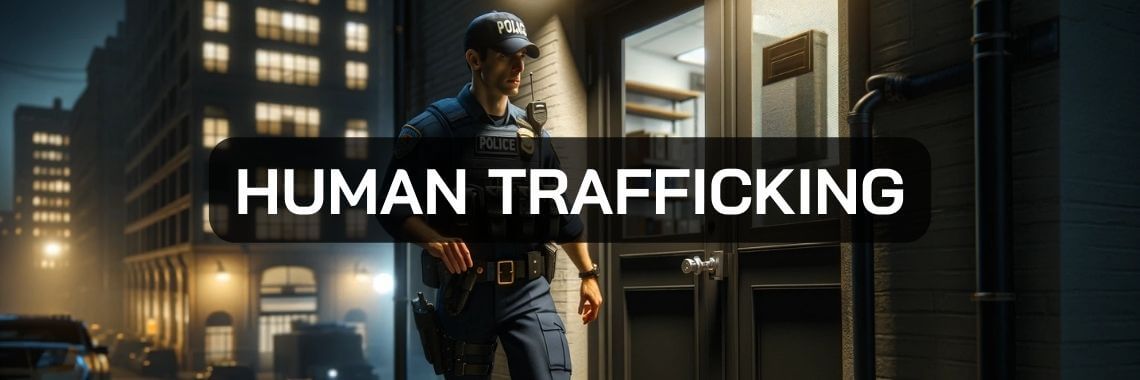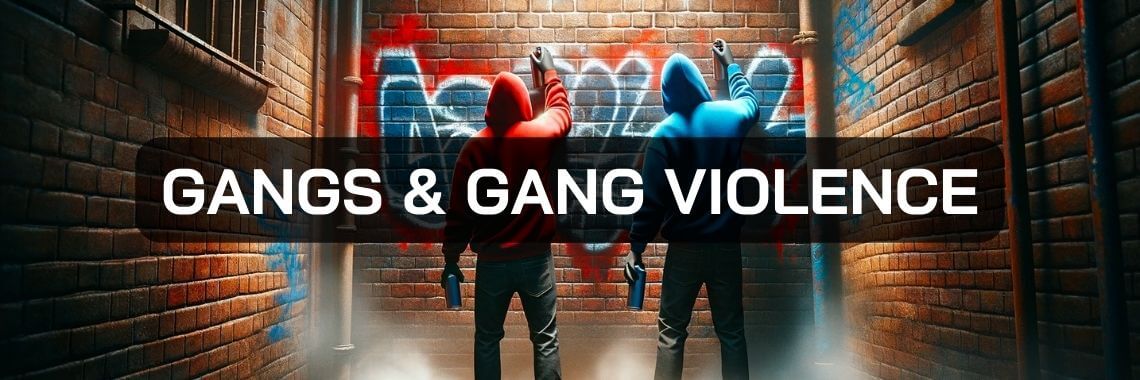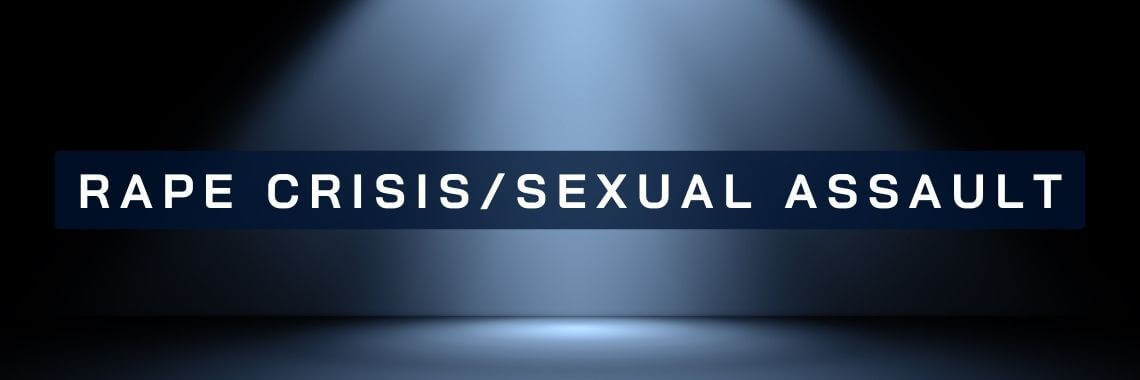Connecticut Police Officer Standards and Training (POST) Police Recertification
Enhance your law enforcement capabilities and meet your Connecticut Police Recertification training needs with our specialized online courses tailored for POST. Crafted to support professional development, these courses offer flexible, anytime access to crucial knowledge, making them the ideal resource for officers aiming to remain up-to-date in their field. With each course eligible for POST-C credit hours towards recertification, you can complete your training online, anytime, and anywhere. Plus, as our thank you for your service, your first course in this police recertification training is on us. Optimize your skills and fulfill your POST requirements with our Connecticut Police Recertification training.
This course will articulate law enforcement’s role in addressing human trafficking and the complexities of interacting with both the assailants and victims.
In this course, expert instructor Dan Papoosha discusses what law enforcement needs to know about gangs and gang activity, with a focus on Connecticut.
This course focuses on sexual assault laws, interviewing victims, crisis intervention, investigative techniques, and evidence collection / preservation in sexual assault cases.
Post Area 2024
Supervisor Program: Cultural Competence and Diversity
‣ Area: 24-46-4-A1
‣ Instructor: Attorney Eric P. Daigle
‣ Credit Hours: 1
This course covers issues such as stereotyping, prejudice, bias, and hate to introduce students to cultural awareness and diversity.
CT Domestic Violence (23-16-6-C1)
‣ Area: 607
‣ Instructor: Attorney Eric P. Daigle
‣ Credit Hours: 2
This course will assist officers in understanding and complying with model policy procedures and response intervention guidelines.
CT Gangs and Gang Violence (23-23-6-C1)
‣ Area: 624
‣ Instructor: Captain Dan Papoosha
‣ Credit Hours: 2
This presentation covers the structure, culture, and dynamics of prominent gangs and their subsets, gang activity and rivalries, and significant aspects of identification.
CT Path of the Guardian 2023 Q1
‣ Area: 200
‣ Instructor: Attorney Eric P. Daigle
‣ Credit Hours: 2
Path of the Guardian is the effective way to stay up-to-date with weekly training videos on law enforcement legal updates, training on policy, industry standards, current trends, and police practice issues.
CT Citizens with Special Needs, Mental Illness, and Disabilities (22-09-4-C1)
‣ Area: 410
‣ Instructor: Attorney Joseph Race
‣ Credit Hours: 2
This course will focus on recognizing and dealing with persons who have special needs, persons in crisis, and persons demonstrating social/emotional deviance such as neurotic or psychotic behaviors.
CT Qualified Immunity 2022 Update (22-11-2-C1)
‣ Area: 203
‣ Instructor: Attorney Eric P. Daigle
‣ Credit Hours: 1.5
This course is designed to explain Qualified Immunity and its application as a type of legal immunity. Training will review U.S. Supreme Court rulings and provide clarity on the October 2021 rulings in Rivas-Villegas v. Cortesluna and City of Tahlequah v. Bond.
CT Body Worn Cameras (22-10-5-C1)
‣ Area: 502-D
‣ Instructor: Attorney Eric P. Daigle
‣ Credit Hours: 1.5
This course will highlight the history of body worn cameras in law enforcement and areas of concern. Legal and privacy issues will be clarified through a review of First and Fourth Amendment implications.
Cultural Competence and Diversity (24-46-4-A1)
‣ Area: 24-46-4-A1
‣ Instructor: Attorney Eric P. Daigle
‣ Credit Hours: 1
This course covers issues such as stereotyping, prejudice, bias, and hate to introduce students to cultural awareness and diversity.
CT Path of the Guardian 2022
‣ Area: 200
‣ Instructor: Attorney Eric P. Daigle
‣ Credit Hours: 8
Path of the Guardian is the effective way to stay up-to-date with weekly training videos on law enforcement legal updates, training on policy, industry standards, current trends, and police practice issues.
2021 Connecticut Legal Update (21-12-2-C1)
‣ Area: 201
‣ Instructor: Attorney Eric P. Daigle
‣ Credit Hours: 1
After a very quiet 2019-2020 Supreme Court session on the topics of law enforcement operations, 2020-2021 SCOTUS session was packed with cases that are important to public safety operations.
CT Social Media & First Amendment Implications (21-01-2-C1)
‣ Area: 203
‣ Instructor: Attorney Eric R. Atstupenas
‣ Credit Hours: 1.5
This course will cover an overview of government employee free speech and how to evaluate a department’s ability to investigate and discipline officers when they post on social media, blogs, or department intra-net.
CT Bigotry and Bias Crimes, Procedural Justice (21-05-5-C1)
‣ Area: 524 (2 Hours), 416 (1 Hour)
‣ Instructor: Attorney Eric P. Daigle
‣ Credit Hours: 3
This course breaks down the classifications, statistics, and data of hate crime offenses against persons, property, and society, and discusses how law enforcement can help their communities through its role in addressing the rise in hate crimes.
CT Understanding Fair and Impartial Policing, Implicit Bias (21-04-4-C1)
‣ Area: 413 (1 Hour), 419 (1 Hour)
‣ Instructor: Attorney Eric P. Daigle
‣ Credit Hours: 2
In this course, Attorney Eric Daigle covers implicit bias and how it relates to the basic issues of Fair and Impartial Policing from the organizational, personal, and philosophical perspectives, to the perspective of officer safety.
Marijuana Madness: 2021 Connecticut Update (21-11-2-C1)
‣ Area: 201
‣ Instructor: Attorney Eric P. Daigle
‣ Credit Hours: 1.5
In this seminar, the panel provides an update on the legalization of cannabis in Connecticut and the cannabis industry in the US. Additionally, a review of the Connecticut legalization law is provided to police executives for policy and procedure considerations.
CT Leadership for a Lifetime (21-07-2-C1)
‣ Area: 201
‣ Instructor: Paul Butler
‣ Credit Hours: 2
In this motivational keynote, speaker Paul Butler covers what it takes to be a good professional and highlight the power of being a good person. We will focus on how to take individual talents and apply them to a group setting to make an unstoppable and productive team.
CT Force Investigations for Supervisors (21-03-2-C1)
‣ Area: 209
‣ Instructor: Attorney Eric P. Daigle
‣ Credit Hours: 2
In this course, Attorney Eric Daigle examines the best practices for policy and operational standards to ensure effective force investigations adhering to constitutional policing.
CT Community and Police Relations (21-08-4-C1)
‣ Area: 403
‣ Instructor: Lawrence A. Terra, Esq.
‣ Credit Hours: 2
This course features Assistant Chief Lawrence Terra as he focuses on the policing crises that we face today regarding an ever-growing lack of trust and confidence from our communities.
2020 Connecticut Legal Update (20-09-2-C1)
‣ Area: 201
‣ Instructor: Attorney Eric P. Daigle
‣ Credit Hours: 1
The 2020 legal update reviews Public Acts, a United States Supreme Court case, CT Supreme Court, Second Circuit Court of Appeals, and the CT Appellate Court.
CT Training Officer Liability (20-03-2-C1)
‣ Area: 203
‣ Instructor: Attorney Eric P. Daigle
‣ Credit Hours: 1
Training officers hold a significant impact on protecting law enforcement agencies from excessive liability. This course will focus on the essential need for continued education to ensure that the legal standards for training are met by your department.
CT Qualified Immunity: What the Public Needs to Know (20-06-2-C1)
‣ Area: 203
‣ Instructor: Attorney Eric P. Daigle
‣ Credit Hours: 2
This course is designed to explain Qualified Immunity and its application as a type of legal immunity.
Housing Law: Landlord-Tenant Disputes (24-47-2-C1)
‣ Area: 213
‣ Instructor: Attorney Joseph Race
‣ Credit Hours: 2
This course provides law enforcement officers with an overview of landlord-tenant law in Connecticut in order to familiarize them with situations found in regular environment.
CT Civil Liability: What Officers Need to Know (20-04-2-C1)
‣ Area: 203
‣ Instructor: Attorney Eric P. Daigle
‣ Credit Hours: 2
This course is introductory and focuses on legal analysis, guidance, and interpretation of current laws. The topics will address agency liability and current police practices in effective and constitutional operations.
Connecticut House Bill 6004: What Officers Need to Know (20-12-2-C1)
‣ Area: 201
‣ Instructor: Attorney Eric P. Daigle
‣ Credit Hours: 2
This update concisely covers the Police Accountability Bill as a legal training course that must be reviewed by Connecticut law enforcement.
CT Civil Liability for Supervisors (20-05-2-C1)
‣ Area: 203
‣ Instructor: Attorney Eric P. Daigle
‣ Credit Hours: 3
This course addresses and provides recommendations for developing policies which can limit liability to supervisors and the law enforcement entities.
CT Recording Police and Protecting Civil Rights (19-01-2-C1)
‣ Area: 203
‣ Instructor: Attorney Eric P. Daigle
‣ Credit Hours: 2
This course will review the legal standards and applicable policy guidelines set by the Court, allowing citizens to record officers in the performance of their duties.
CT Seizure of Electronics: Protecting First and Fourth Amendment Rights (20-02-2-C1)
‣ Area: 208
‣ Instructor: Attorney Eric P. Daigle
‣ Credit Hours: 1
This course will address the exceptions, principles, procedural requirements, constitutional law, statutory law, and case law relating to search & seizure of electronic devices.
CT Crowd Control and the First Amendment (20-01-6-C1)
‣ Area: 606
‣ Instructor: Attorney Eric P. Daigle
‣ Credit Hours: 2
This course will provide a high-level overview of the legal standards applicable to the First Amendment and its continued impact on law enforcement.
CT Marijuana Madness: What Every Cop Needs to Know (20-08-2-C1)
‣ Area: 203
‣ Instructor: Attorney Eric P. Daigle
‣ Credit Hours: 2
This course provides an update on the cannabis industry in the US and abroad, along with policy and procedure considerations for departments in states that have legalized.
CT Rape Crisis/Sexual Assault
‣ Area: 512
‣ Instructor: Attorney Eric P. Daigle
‣ Credit Hours: 2
This course will cover sexual assault statutes, special concerns relative to the interviewing of sexual assault victims, rape crisis intervention techniques, specific investigative methods to be used in sexual assault cases, as well as the collection and preservation of sexual assault evidence.
Get Started Training
Enhance your law enforcement capabilities with Daigle Law Group’s online Law Enforcement and Police Training Courses, specifically tailored for Connecticut POST. Our engaging and cost-effective courses are designed to support professional development, provide easy access to essential knowledge, and fulfill training requirements effortlessly. Make them your go-to resource to stay current and advance in your field.



